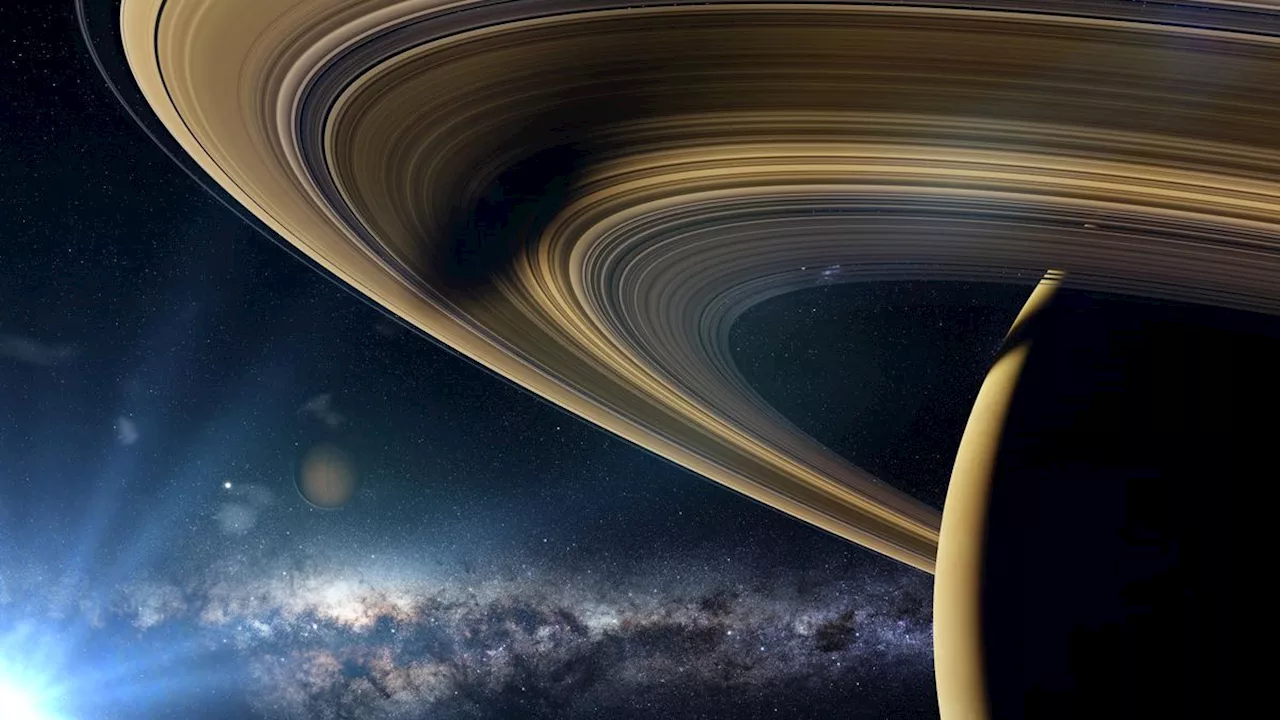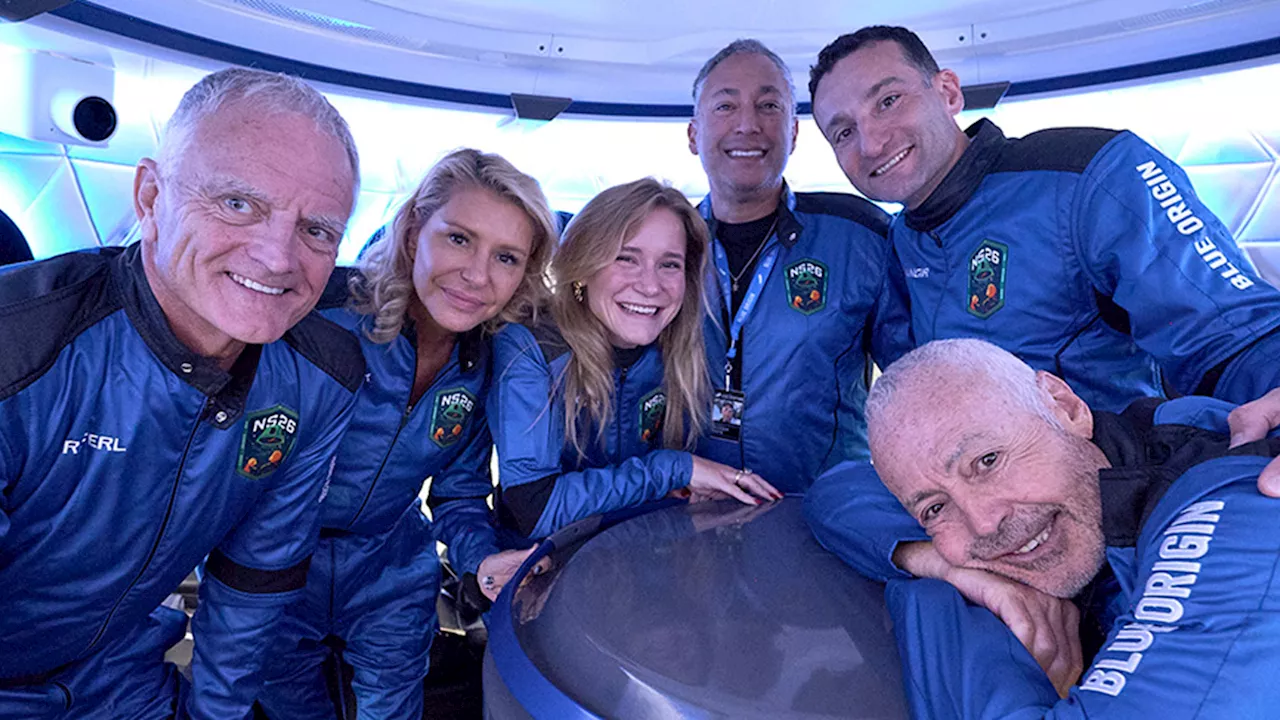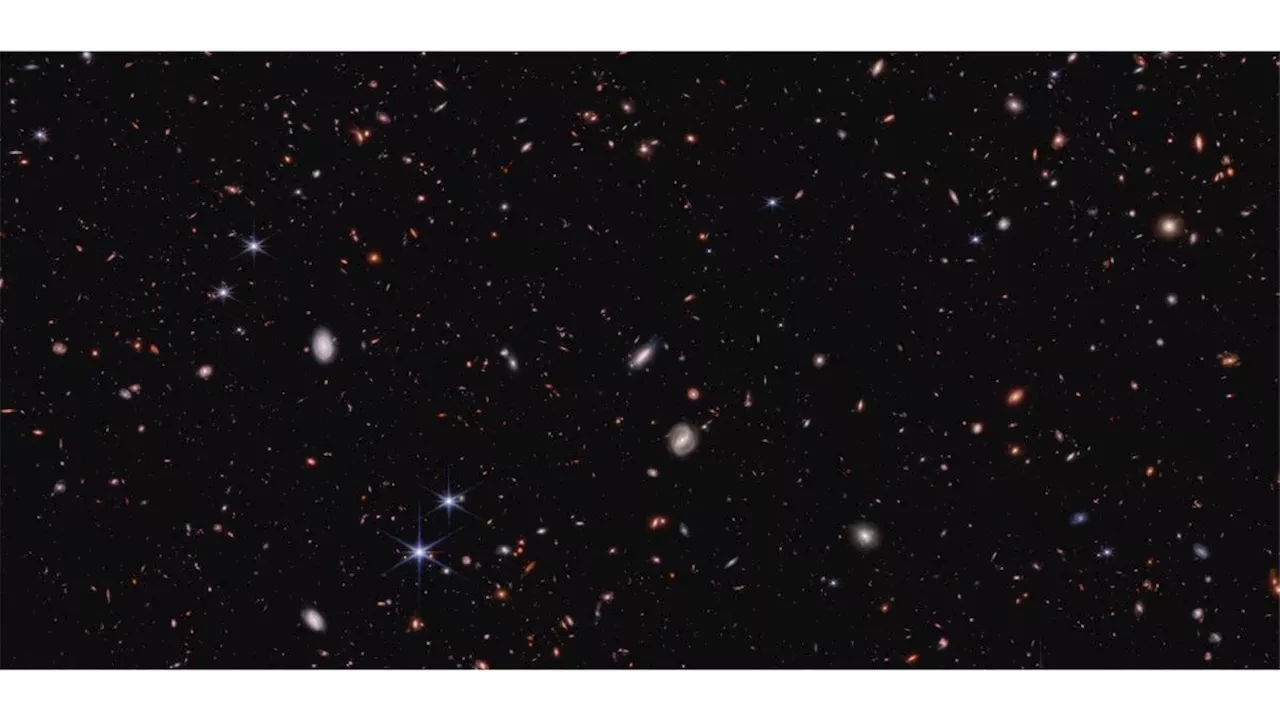Charles Q. Choi is a contributing writer for Space.com and Live Science. He covers all things human origins and astronomy as well as physics, animals and general science topics. Charles has a Master of Arts degree from the University of Missouri-Columbia, School of Journalism and a Bachelor of Arts degree from the University of South Florida.
Jam packed issues filled with the latest cutting-edge research, technology and theories delivered in an entertaining and visually stunning way, aiming to educate and inspire readers of all agesThis image shows a small portion of the field observed by NASA’s James Webb Space Telescope’s NIRCam for the Cosmic Evolution Early Release Science survey. It is filled with galaxies. The light from some of them has traveled for over 13 billion years to reach the telescope.
In the new study, the researchers focused on 261 galaxies from about 700 million to 1.5 billion years after the Big Bang. To estimate the mass of galaxies, scientists typically see how much light a galaxy emits and deduce the number of"was only to glimpse the hottest, most massive stars," Finkelstein said."JWST observes redder wavelengths, so is sensitive to lower-mass, cooler stars, and so can more accurately measure the total amount of stars in these galaxies.
"So, the bottom line is, there is no crisis in terms of the standard model of cosmology," Finkelstein said in a."Any time you have a theory that has stood the test of time for so long, you have to have overwhelming evidence to really throw it out. And that's simply not the case." A star is born when a cloud of gas succumbs to its own gravity and collapses. However, as this gas contracts, it heats up because of friction, generating outward pressure. Nowadays, these opposing forces usually make star formation slow. However, since the early universe was denser than it is today, some research suggests it was hard to expel gas during star formation, letting it happen faster.
United States Latest News, United States Headlines
Similar News:You can also read news stories similar to this one that we have collected from other news sources.
 University of the Arts’ dance program is moving to VermontVermont's Bennington College will take over UArts' undergraduate and graduate dance programs.
University of the Arts’ dance program is moving to VermontVermont's Bennington College will take over UArts' undergraduate and graduate dance programs.
Read more »
 Saturn: Everything you need to know about the sixth planet from the sunCharles Q. Choi is a contributing writer for Space.com and Live Science. He covers all things human origins and astronomy as well as physics, animals and general science topics. Charles has a Master of Arts degree from the University of Missouri-Columbia, School of Journalism and a Bachelor of Arts degree from the University of South Florida.
Saturn: Everything you need to know about the sixth planet from the sunCharles Q. Choi is a contributing writer for Space.com and Live Science. He covers all things human origins and astronomy as well as physics, animals and general science topics. Charles has a Master of Arts degree from the University of Missouri-Columbia, School of Journalism and a Bachelor of Arts degree from the University of South Florida.
Read more »
 Newborn moon may have had many mini-siblings in Earth orbit long agoCharles Q. Choi is a contributing writer for Space.com and Live Science. He covers all things human origins and astronomy as well as physics, animals and general science topics. Charles has a Master of Arts degree from the University of Missouri-Columbia, School of Journalism and a Bachelor of Arts degree from the University of South Florida.
Newborn moon may have had many mini-siblings in Earth orbit long agoCharles Q. Choi is a contributing writer for Space.com and Live Science. He covers all things human origins and astronomy as well as physics, animals and general science topics. Charles has a Master of Arts degree from the University of Missouri-Columbia, School of Journalism and a Bachelor of Arts degree from the University of South Florida.
Read more »
 University of San Diego graduate will travel to International Space StationJonny Kim, who earned a bachelor’s degree at the University of San Diego, will spend eight months on the International Space Station doing research, becoming the latest NASA astronaut with Sa…
University of San Diego graduate will travel to International Space StationJonny Kim, who earned a bachelor’s degree at the University of San Diego, will spend eight months on the International Space Station doing research, becoming the latest NASA astronaut with Sa…
Read more »
 Youngest woman makes space history on Blue Origin's space flightA college student achieved one of her lifelong goals on Thursday morning by going into space on Blue Origin's New Shepard.
Youngest woman makes space history on Blue Origin's space flightA college student achieved one of her lifelong goals on Thursday morning by going into space on Blue Origin's New Shepard.
Read more »
Youngest woman makes space history on Blue Origin's space flightA college student achieved one of her lifelong goals on Thursday morning by going into space on Blue Origin's New Shepard.
Read more »
